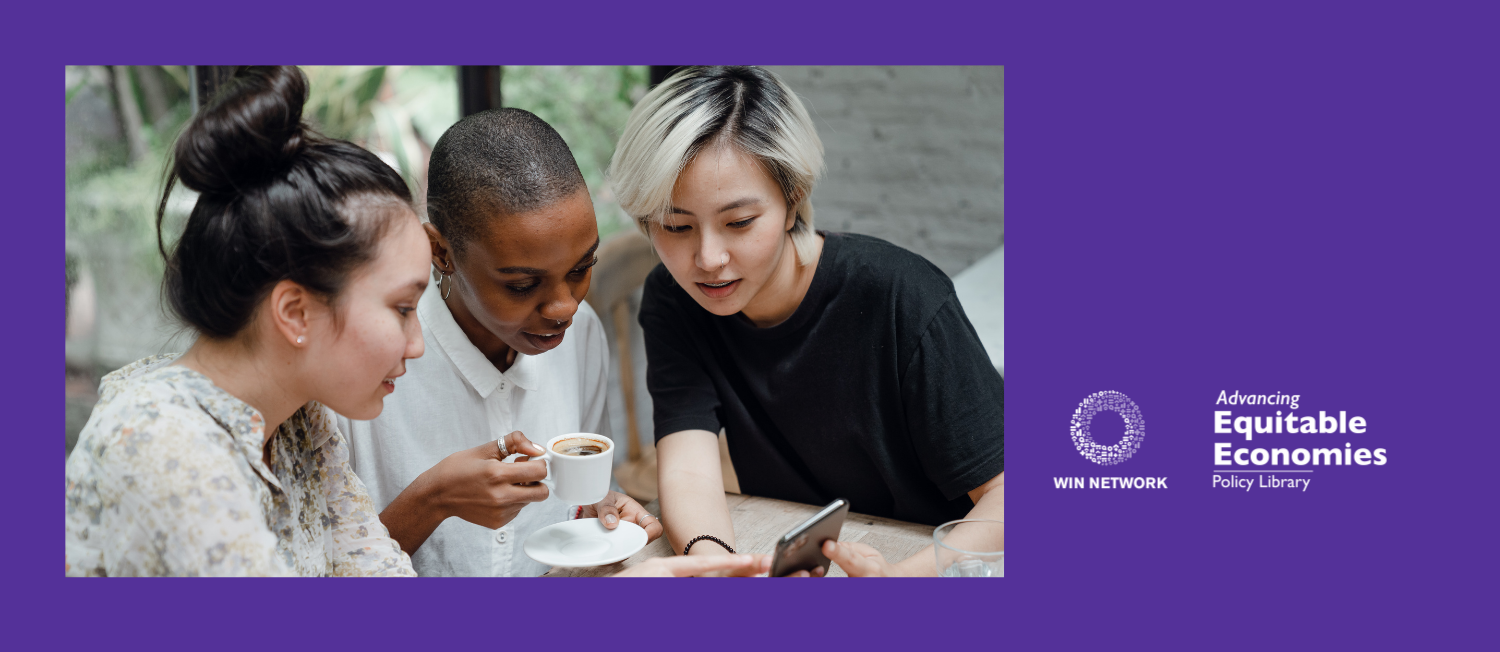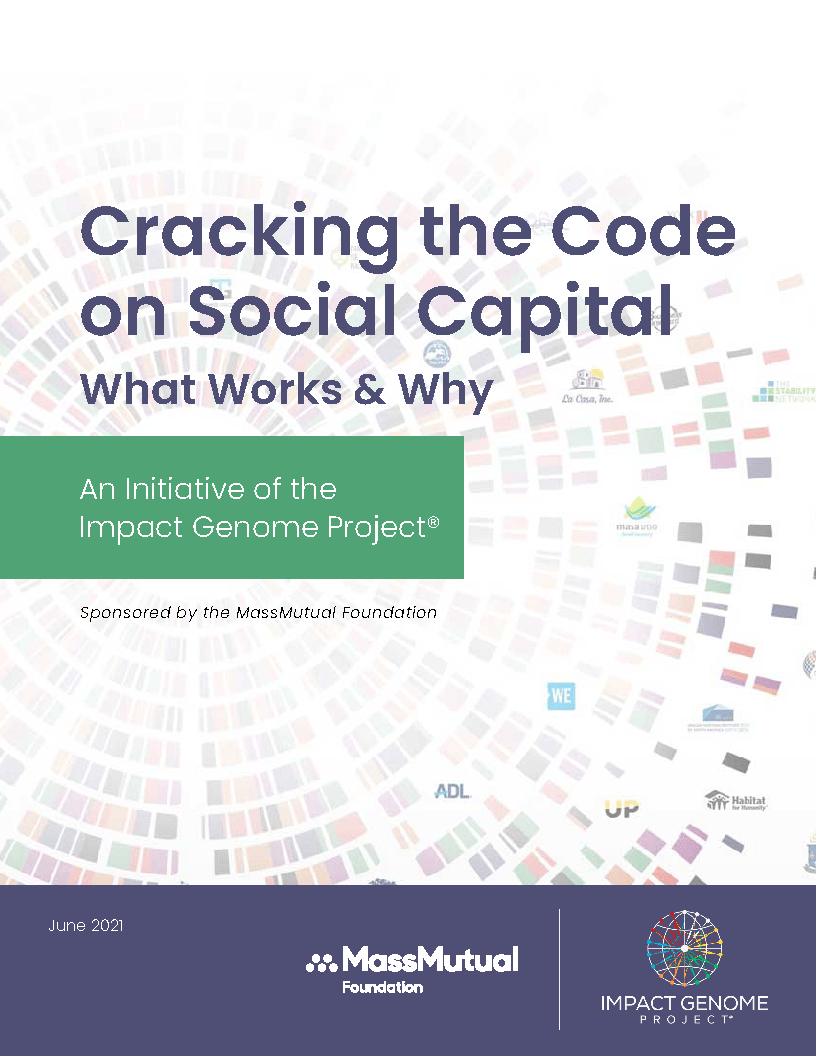An Introduction to Social Capital
This collection is brought to you in partnership with The Pew Charitable Trusts and authors of Estimating Community Health Outcomes with An Equity-Informed Social Capital Measure at University of Minnesota Extension.
What is Social Capital?
Social capital refers to the networks of relationships among people who live and work in a particular society or community and enable the society to function effectively. It encompasses the connections, trust, norms, and networks facilitating collaboration among individuals and groups. These networks within communities deliver resources, support, and opportunities for economic empowerment and social mobility—contributing to positive outcomes, like enhanced financial health, educational attainment, and overall well-being.
Why Social Capital Matters for Well-Being
Social capital promotes individual well-being, collective resilience, and social cohesion. Social capital fosters social norms and shared values that promote cooperation and mutual aid, strengthening support networks that create scaffolding to deliver services. Networks characterized by trust, reciprocity, and mutual aid contribute significantly to community resilience and well-being.
The positive health outcomes associated with social capital arise from the strong interpersonal networks that can deliver information and services. These networks effectively reach community members and are well-positioned to engage residents and people with lived experience.
During the COVID-19 pandemic, communities with strong social networks and high levels of trust were able to mobilize resources, share information, and coordinate responses more effectively. For example, residents in some communities organized mutual aid groups to support vulnerable individuals by delivering groceries, medications, and other essential supplies. In King County, Washington, a motion was passed allowing individuals to engage in volunteerism to support their local communities during the pandemic. Social connections have also mobilized local organizations and online communities, playing a vital role in providing emotional support, sharing critical information about health guidelines, and offering assistance to those in isolation or quarantine.
Social capital serves as an antidote to social isolation, a significant public health concern in the United States. At least half of U.S. adults report experiencing loneliness, particularly young adults and older adults. Social isolation impacts immediate health outcomes and long-term socioeconomic status by limiting access to health information, services, emotional and practical support, and the ability to mobilize resources during crises.Ultimately, social capital is a determinant of equity, influencing opportunities individuals have to improve their health and economic status. Inequalities in social capital contribute to disparities in access to opportunities and health outcomes. In rural communities, barriers such as limited access to medical care and economic assistance make building key social connections especially difficult.
Our Epidemic of Loneliness and Isolation: The U.S. Surgeon General’s Advisory on the Healing Effects of Social Connection and Community
Resource - Report
Brought to you by U.S. Department of Health and Human Services
Growing Social Capital
Advocates, practitioners, and policymakers can promote social capital by supporting initiatives that drive economic development, enhance community engagement, build trust among residents, and provide access to resources and services. Such efforts include social infrastructure, arts and culture, and community-based education programs. Understanding and leveraging social capital enables policymakers and public health officials to effectively promote community health, reduce disparities, and enhance overall well-being.
Build Social Infrastructure
One way to build social capital is by building social infrastructure that creates spaces and opportunities for people to connect, collaborate, and support one another. Social infrastructure refers to the physical spaces and organizational frameworks that support the development of social connections and community engagement. Places like community centers, parks, and social programs can strengthen bonds, build trust among residents, and promote a sense of belonging and shared purpose. Strengthening social infrastructure can impact social connections and community health. To build a connected community, equitable access to benefits is essential for, especially for those at risk of social isolation. Social infrastructure plays a crucial role in fostering social interaction, providing essential services, and enhancing the quality of life within a community.
Promote Arts and Culture
Promoting arts and culture enhances social capital by foregrounding community expression and creating opportunities for artists and community members. Initiatives such as providing access to the arts and humanities to underserved groups and organizing mural painting projects promote inclusivity, strengthen community bonds, and empower communities to address health disparities collectively. Community-based artists can provide emotional support and inspire collective action through creative storytelling and transformative works. These social capital-building efforts can foster transformative social change to advance equity, health, and well-being.
Action Guide for Building Socially Connected Communities
Resource - Guide/handbook
Brought to you by Foundation for Social Connection
We-Making: How Arts and Culture Unite People To Work Toward Community Well-Being
Resource - Guide/handbook
Visualizing Well-Being: Belonging and Civic Muscle
Story
-
 Original
Original
Brought to you by Community Commons
Leverage Collective Capacity
Local businesses and organizations can collaborate with community leaders and residents to introduce solutions like pop-up vaccination clinics and virtual support groups. By fostering social capital, these collaborations can boost local economies through increased trust and cooperation among businesses, resulting in job creation and economic growth. Building collective capacity among individuals, businesses, and institutions strengthens community infrastructure by integrating social connections into practices, policies, and programs. This approach helps build robust social networks for marginalized groups, providing access to job opportunities, mentorship, and resources that support upward mobility.
State and federal governments play a crucial role in building social capital by implementing policies and programs that invest in social infrastructure, arts and culture, and civic education. In Canada, the Government's Community, Culture, and Recreation Infrastructure stream has committed over $180 billion to enhance infrastructure nationwide, including cultural sites, recreational facilities, community centers, and libraries. In the United States, federal programs like the Head Start program and the Community Services Block Grant (CSBG) program are aimed at building networks within marginalized groups that can also improve well-being. By emphasizing social capital through community development, programs can foster transformational change through strengthening community connections and trust, which in turn drives collaborative efforts, enhances problem-solving capabilities, and empowers individuals and organizations to implement more effective and sustainable solutions.
Social capital is vital for public health practitioners and policymakers as it contributes to broader community development goals like economic development and civic engagement. Changemakers can increase community social capital and improve well-being by promoting social cohesion, addressing well-being disparities, and fostering equitable communities.
We have more to learn about the connection between social capital, health and well-being. Researchers at academic institutions such as University of Minnesota and federal agencies like Assistant Secretary for Planning and Evaluation (ASPE) are advancing our knowledge of how programs can leverage social capital to boost employment, reduce poverty, and enhance child and family well-being and our measure of social capital. As our understanding of social capital and its profound impact on health expands, so does the potential for catalyzing transformative changes in community well-being.
The Belonging Barometer: The State of Belonging in America
Resource - Report
Brought to you by Over Zero
How the Vital Conditions Framework Helps Communities Thrive
Story - Written
Brought to you by Technically Media Inc.
Published on 04/25/2024
In Common Newsletter: Priority Populations Channel
Resource
Brought to you by Community Commons
Published on 09/29/2022
Promising Policies: Multisolving for Mental Well-being and Equitable Economies
Resource - Guide/handbook
Brought to you by Community Commons
Social Capital: What, Why, and How We Can Use It as a Tool for Empowerment
Resource - Journal Article
Shaping a Thriving Future: The Power of Belonging and Civic Muscle
Story - Written
Brought to you by Bridge Alliance Education Fund
Published on 04/15/2024
Social Connection Advances Community Well Being
Story
-
 Original
Original
Brought to you by Community Commons
How Does Our Sense of Belonging Shape our Mental Health?
Story
-
 Original
Original
Brought to you by Community Commons
Related Topics
























